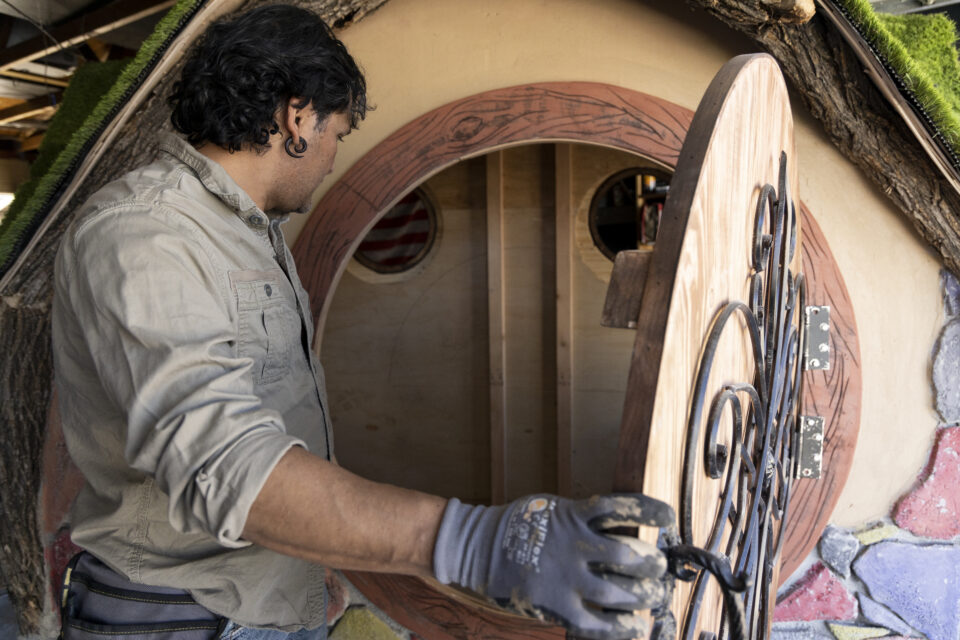If artistry is making rough things beautiful, Rudi Monterroso is an artist in the truest form.
Rudi Monterroso grew up surrounded by armed conflict in Guatemala. By constructing small shelters from natural materials, he provided himself and other kids a “magical shield” from threats outside. He also made his own toys out of carved wood, mud, and clay.
Painting became a way of expression and connection for Monterroso as he grew and moved to the U.S. Eventually, art became his profession. Completely colorblind, Monterroso works in values from dark to light. Holding a brush for too long pains his hands; he’s known to spread paint across a wooden canvas by stomping and sweeping his feet in a flamenco dance.
Since moving to Colorado in 2004, Monterroso, a father of three living in Littleton, has built a life teaching and showing his paintings/dancing process at various locations, including the Denver Art Museum. The COVID-19 pandemic halted this sociable artist’s activities, and his income. During this time of need, he looked to his past and found something positive to keep him going: shelter building—Hobbit houses, specifically. Monterroso sold everything he had of value, including beloved collector cars, to buy the tools and machines he’d need.
Inspired by the Lord of the Rings and Hobbit movies, Monterroso prioritizes a connection between the Earth and structure in his builds. He tries to use materials that are not treated with chemicals. “The use of recycled materials gives me a challenge as an artist to be able to be more creative,” he says, “instead of just buying something that I know all I need to do is cut it.”

He’s simultaneously extended his creations to towering metal flowers, branch archways, and enchanting doors that transform practically any space. At the beginning of the pandemic, Monterrorso created art pieces to put along the trail behind his backyard. He set up a scavenger hunt for neighborhood kids to point out painted frogs, foxes, and flowers.
“I noticed that the kids had nothing to do; they were bored,” he says. Wooden doors planted beneath tree branches offer kids a portal to their own imaginations. “When I’m working [in my outdoor studio], I hear people knocking at the doors, the kids coming out with stories about who lives there and making wishes.”
Monterroso’s young daughters, now ages 12 and eight, grew up with their Hobbit house built in the southwest corner of the backyard. It’s the first place they go when they have friends over. They’ve also joined their dad for games and art lessons in his outdoor studio, built from a section of an old plane.
“In my romantic way of seeing these projects, [it’s] creating these spaces for families to come together and not depend on iPads or computers to entertain the kids,” says Monterroso.
A child-size 4-by-4-foot Hobbit house starts at around $3,000. An adult-size outdoor office space, about 8-by-10-feet, costs $7,000 and up. It’s a long-term investment, says Monterroso, whose girls have grown up with their playhouse and redecorated the space for different uses. Props like tree stump stools, archways, and doors are lower-cost but still effective.
Commissions from Monterroso are customizable; he works with each client’s needs, desires, and budget in mind. That said, customers should understand that reclaimed materials are not free to work with.
“It is not just picking up trash and putting it together,” he says, adding that recycled materials are increasingly in demand by the construction and art industries. “It’s being able to carefully select the right materials to create a magical place.”
Find Monterroso’s artwork and contact information at rudimonterroso.wordpress.com.





